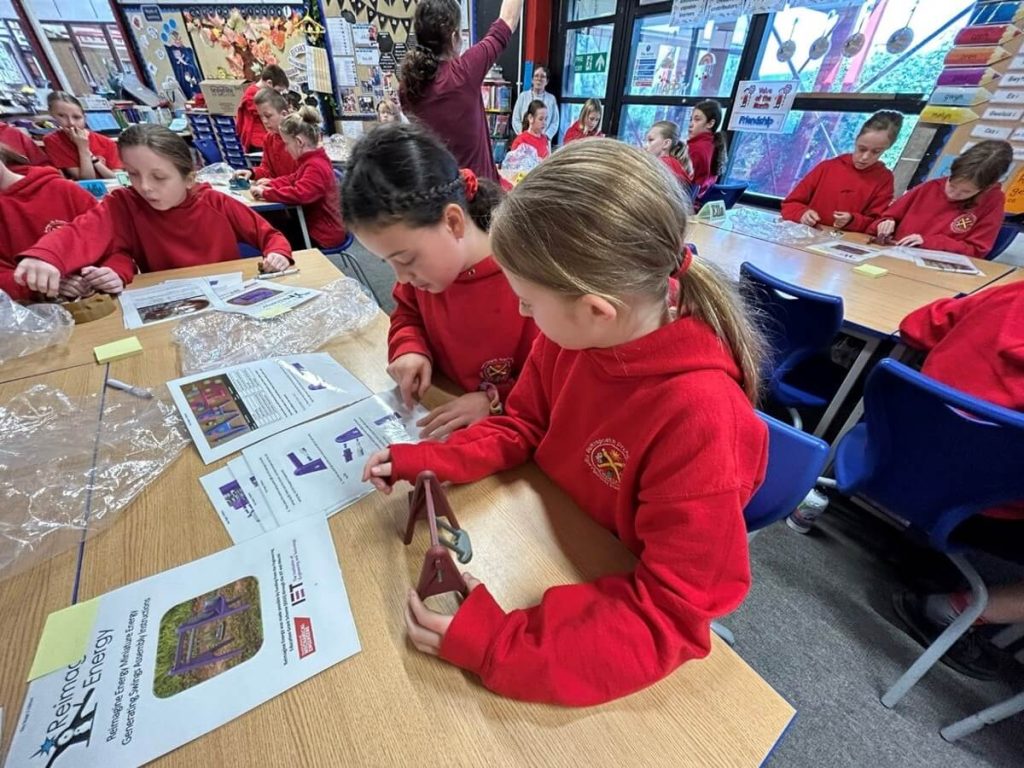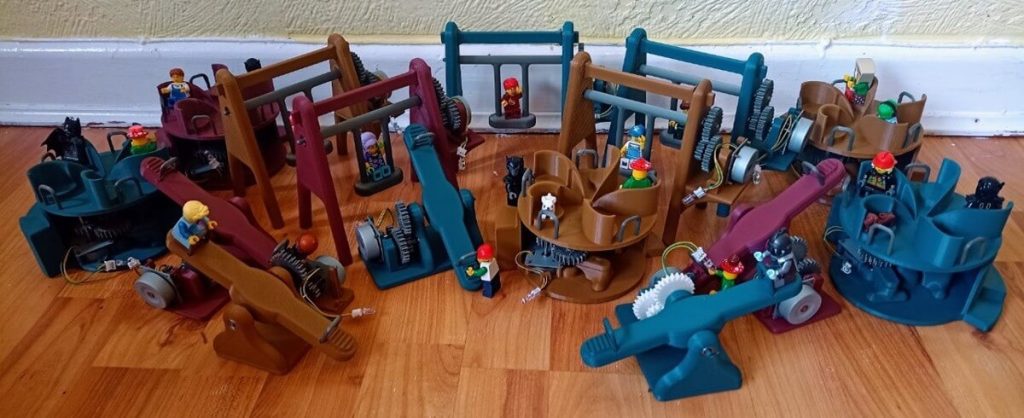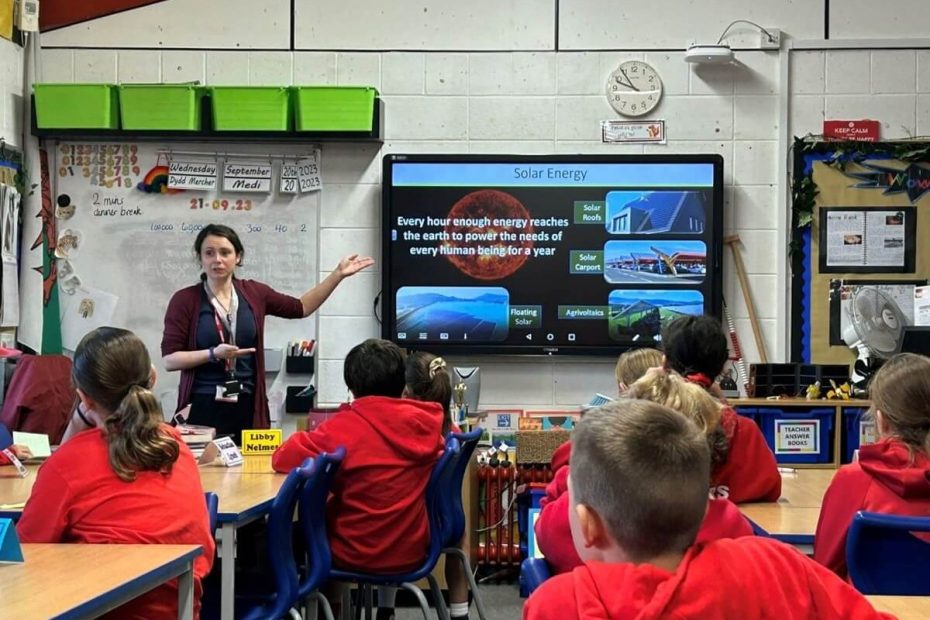Researcher Dr Sarah-Jane Potts leads a project called Reimagine Energy, which aims to open young people’s minds to the opportunities within engineering.
Sarah-Jane is a Technology Transfer Fellow in the industrial coatings group at SPECIFIC. Her research focusses on the scale-up of printed PV.
With help from volunteers from SPECIFIC, Sarah-Jane has visited six schools in Newport and Cardiff and more than 600 pupils in years 5 to 7 (age 9-12) so far.
We asked her to tell us more about the project.
What activities did you do with the pupils?
I created some kits to make miniature energy-generating playground items like swings, see-saws, and carousels.
The kits come with instructions tailored to different age groups, and the parts are 3D-printed with recycled plastic. The pupils use these kits to construct the playground equipment and then they use the movement of the toy to generate energy and light an LED.
Through constructing the kits, they learn about how electrical energy works. I also talk to them about the role of renewable energy – and engineers – in making our energy sources more sustainable.
What are your aims with the project?
My aim is to encourage young people, especially girls and those from low socio-economic backgrounds, to see engineering as a creative career option that can make a difference in society.
I also wanted to increase awareness of how engineering can help to solve the climate crisis through innovative forms of sustainable energy generation.
How is the project going?
Really well! The pupils have enjoyed building the kits, but I also saw a real change in their perceptions of engineering.
At the beginning and end of the session, the students take part in a reflection exercise using post it notes. They wrote down what they thought engineering was, who an engineer was, and how it could help tackle the climate crisis.
Before, the majority were unsure of what an engineer actually was, but most believed anyone could be an engineer. Most references were male (e.g. Dad) and to fixing things. Some thought an engineer was a builder, plumber or even a firefighter.
Afterwards, they still believed that anyone could be an engineer, but had more references to maths and science and to the role of engineering in solving problems and in making, creating and designing things.
They were also able to name more ways that engineers could help find solutions to the climate crisis and illustrate some of their own ideas for generating energy. These ranged from toys that created energy every time you hug them, to pencils and even footballs that create energy whenever they are used.
What were your favourite responses?
When asked about how they found the session, some of my favourite responses were those that wanted future events such as “yes the assembling was fun and I would love to do it again”. As well as responses where they found the session made engineering more relatable or attractive to them, including “yes I want to be one when I grow up”, “yes it made me realise engineering can be fun and interesting”, and “yes it did and I understand it better and it’s really fun!”
What challenges did you have?
The kits were too delicate! I wanted to show that I’d considered sustainability in the kit designs so I used recycled plastic for the 3D-printing. Unfortunately, the material has a lower mechanical strength than non-recycled, and some smaller parts did not last as long. It resulted in us needing to make new parts regularly. I made the parts larger and thicker to help durability, but this used more plastic and took a lot more time.
However, I found this helped the pupils consider the challenges of material selection. It provided a real-life engineering problem for them to study. Choosing the most sustainable material needs to be balanced with durability and other needs, which is hard to explain through presentations alone.
The Reimagine Energy project was funded by the Engineering Education Grant Scheme (EEGS), which was jointly funded by the Institution of Engineering and Technology (IET) and the Institution of Mechanical Engineers (IMechE).



